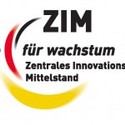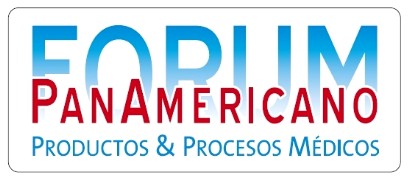Current contributions from CLEANICAL®
- From the Editorial (FORUM series volume 37)
Sterile, but not clean?
 Dr. med. Dipl. Ing. Thomas W. Fengler
Dr. med. Dipl. Ing. Thomas W. Fengler
What would Florence Nightingale say?
The sterilisation measure goes back to the work of Louis Pasteur and is often referred to the British woman Florence Nightingale, who was born in Tuscany, trained in a German hospital near Düsseldorf (Kaiserswerth 1850/51) and worked for the British Kingdom. She knew many traditions, traditional mistakes, because of her travel activities and later experiences during the Crimean War (1854-56). She developed strategies for hygiene and organised measures, as they occur everywhere where many people live closely together, whether healthy or sick. Fleas, bugs, bedding, clothing, water, toilet and drainage - comprehensive sanitation must already have taken place before turning to the preparation of laundry and bandages, as well as medical products.
Florence Nightingale, from a liberal merchant's family, not the aristocratic daughter of a politician of the House of Commons, devoted her life to nursing care, which in the 19th century was not appropriate for "higher daughters": on the one hand religious congregations dedicated to this task, on the other hand simple, mostly single women, who thus ensured their survival, often with a reputation for drunkenness or who were also said to have other services during night work.
[source Florence Nightingale is Wikepedia 2011]
It had found that, in the event of war, the organisation of the (British) army, in particular, left much to be desired in terms of the care of soldiers in general and hygiene in particular. This began with shirts and bed linen, which were not sufficiently available, continued with the lack of stretchers and transport facilities for the wounded and led to the fact that gunshot victims already had maggots in their wounds when they came to the dressing station.
So her performance was especially an organisational one: Documentation of the grievances, a statistical processing and at the same time the implementation of improvement measures, because thanks to her own good preparation she had not only extensive knowledge in the necessities of efficient care, not only a sisterhood of volunteers, but also donations. It is very interesting to read in this biography, because it becomes clear that hygiene is of course not an individual achievement, but that the achievement is only possible if a recognized truth is then translated into measures. The resistance was considerable, and motives were repeatedly assumed that were irrelevant. In this respect, Florence Nightingale stands for a (women's) movement, which made it clear to the warring generals and decisive politicians that, thanks to the long-range powder weapons, new patterns of injury were now appearing in large numbers for which there were as yet no adapted medical logistics.
She was neither a "plaster saint" nor a "lady with the lamp" in the night watch (which she probably carried out quite lonely, as she forbade the sisters to work at night after 8:30 p.m. in order to avoid reputation-damaging situations for her staff). Despite frequent illnesses, she proved to be an assertive woman who was able to do more than boil instruments. She statistically recorded infections (cholera, typhoid, dysentery, gangrene) and proved that more British soldiers died from them than from the bullet wounds themselves (Fig. 2).
Florence Nightingale knew how to document the causes of infection and present them in a statistically clear way
Her preference for preserving jam, a technique of preserving jam before our electric refrigerator era, is often quoted. Wasn't it obvious that boiling off a (rusty, incompletely cleaned) amputation saw might reduce the risk of infection? Making sterile was different from disinfecting, where the micro-organisms can soon grow again!.
If 150 years later, limit values for cleaning (harmless, warning, unacceptable) are now being discussed, this refers exclusively to the measurability and feasibility of what is technically possible and not to the measurability of what is clinically necessary! As is well known, cleaning limit values only tell us something about the criteria of technical feasibility, which we demand from the RDG. A comparison, a reference to degrees of contamination of clinically used, potentially infectious flexible endoscopes is not possible.
In contrast to surgical intervention with changing instruments (apart from hooks and clamps), endoscopy is considerably longer (not seconds, but many minutes), which can promote infection.
The clinically required preventive measure is measured by the recognised evidence of wound healing disorders. These are recorded during surgical operations in contrast to endoscopies. Due to the mostly outpatient endoscopy measure, the patient disappears into his everyday life again. If there is a reaction or infection, he would probably not necessarily return to the site of the endoscopy. He stays in bed or has to go to hospital.
It would be important and desirable in terms of prevention, i.e. hygiene, to record the post-endoscopic complications as a follow-up ratio. A simple phone call one week after the endoscopy would already contribute a lot to the recording of post-endoscopic complications.
Endoscopies are generally considered semi-critical, the flexible endoscopes are inserted into the body along a colonised endogenous microbiome. This overlooks the fact that a resistant microbiome could possibly also develop in the flexible endoscope, from application to application, from disinfection to disinfection! As is well known, not all flexible endoscopes can be brushed, there are areas that can hardly be rinsed. Microorganisms do not care where they grow! They might even grow into the supply hoses? Who examines destructive flexible endoscopes to determine the focus of biological retention?
As in this paper, there are many arguments, but the theses need to be supported by evidence, for which research series are needed. Apart from our own ReSt study [FORUM PanAmericano 32/2017 p. 47-48], I know of few destructive tests on flexible endoscopes. Or are manufacturers' own microbiological tests not published?
Neither Spaulding in the 60s of the last century nor the German KRINKO 2012 wanted to classify therapeutic endoscopy as "semi-critical" in any other way. In view of its responsibility for the patient, the operator can make a more cautious risk assessment as part of its quality management, which provides for a classification as Critical C.
The clinical operator must be able to rely on findings and not on opinions. Since today bacterial strains such as fingerprints are distinguishable and therefore traceable to endoscopes under appropriate circumstances, it will be a question of adhesion in the medium term that will force low-temperature sterilisation in flexible endoscopy. Low-temperature steam sterilisation with 2% formaldehyde has been available for decades as a tried and tested, low-cost method that also offers sufficient space in the sterilisation chamber for large duodenoscopes and colonoscopes.
We know that we do not achieve sterility by cleaning, disinfection is only effective over time, offers no packaging and usually fails due to spore formers such as C. dificile. The spore-killing measure of sterilisation is able to increase the security for a freedom from viable and reproducible microorganisms. The sterile barrier packaging enables us to achieve the documented storage capability of a dry flexible endoscope until it is opened for the next patient.
The sterilisation measure was and is based on the assumption that a further step to prevent infections increases the safety of the reprocessing result. Just as the safety belt together with the airbag, sometimes one, sometimes the other, plays a decisive role in securing the driver, so the many reprocessing steps as a whole are there to reduce risks and increase safety when reusable medical devices are used on the next patient.
The sometimes fatal infections in duodenoscopies rightly describe the reported evidence as the "tip of the iceberg". They do not say what percentage or how many icebergs there are still. We know that icebergs are of very different shapes, some fall over, but many have more mass under the sea surface than we can see. Endoscopy is therefore on the (hygiene) test bench until the all-clear is given.
We cannot wait until a Florence Nightingale comes. Why doesn't the health insurance pay for a phone call one week after flexible endoscopy? With an openly accessible internet statistic, the percentage incidence of complications after the allegedly so gentle endoscopy could then be documented with "big data" - see the procedure of antibiotic stewardship! This is the only way to find out whether this hygiene discussion about allegedly contaminated flexible endoscopes is a chimera of regulation-obsessed researchers! Perhaps the microbiom suspected here in a flexible endoscope does not have any effect on the patient's well-being, even after many applications, despite the described biofilm formation and recognisably scratched working channels?.
As long as we cannot relate the actual infections that have been published to a total number (of endoscopies performed in the entity under consideration), this is all an endless discussion full of well-intentioned assumptions.
200 years of F. Nightingale can teach us what thoroughness and prudence are. As a woman among generals she enforced appropriate measures for the welfare of the wounded. Recognising what is important is one thing. To be able to prove one's own measures in the conflict of opinions is another. In this sense I wish the reader of the FORUM volume 37 suggestions for his work.
 Dr. med. Dipl. Ing. Thomas W. Fengler
Dr. med. Dipl. Ing. Thomas W. FenglerChirurgie-Instrumenten-AG Berlin
Publisher:
- International FORUM Medical Devices & Processes (since 1999)
- FORO PanAmericano (since 2016)
- CLEANICAL participates in the ZIM-KOOP-Project "ChiruClan"
Development of an enzyme-based cleaning process for safe and validated reprocessing of surgical instruments.
The project started 01/01/2014 and is currently in the extension. It is dedicated to the development of novel enzymatic cleaning procedures for surgical instruments together with 2 research facilities and two other companies.

- Out now - new publication of FORUM series
FORUM series Volume Band 37
"Steril - aber nicht sauber?"
- (P) 10/2020
- Recently published in the FORUM series:
FORUM PanAmericano 5th Edition / 5a edición (Volume 36)
"Sterile, but not clean?"
"Estéril, pero no limpio?"
- (P) 03/2020
FORUM PanAmericano 4th Edition (Volume 34)
"Road map for valid processing"
"Hoja de rutas para un procesamiento valido"
FORUM PanAmericano 3rd Edition (Volume 32)
"Processing today"
"Procesamiento de hoy"
FORUM PanAmericano 2nd Edition (Volume 31)
"Processos manuais e automatizados."
"Processamento:Proceder com cuidado e habilidade."
- ZENTRALSTERILISATION Supplement 2015
"Por último 2011 – 2015 / En fin de compte 2011 – 2015
Content: The most interesting articles of "International FORUM Medical Devices & Processes" in spanish and in french translation. A very popular booklet with many participants of "1o Congreso Iberoamericano Esterilización" in June 2015, Barranquilla/Colombia
- The new KRINKO hygiene recommendation
Our "Glossary for KRINKO 2012" was published in Management and Hospital (White Paper Supplement) and can be accessed online at:

